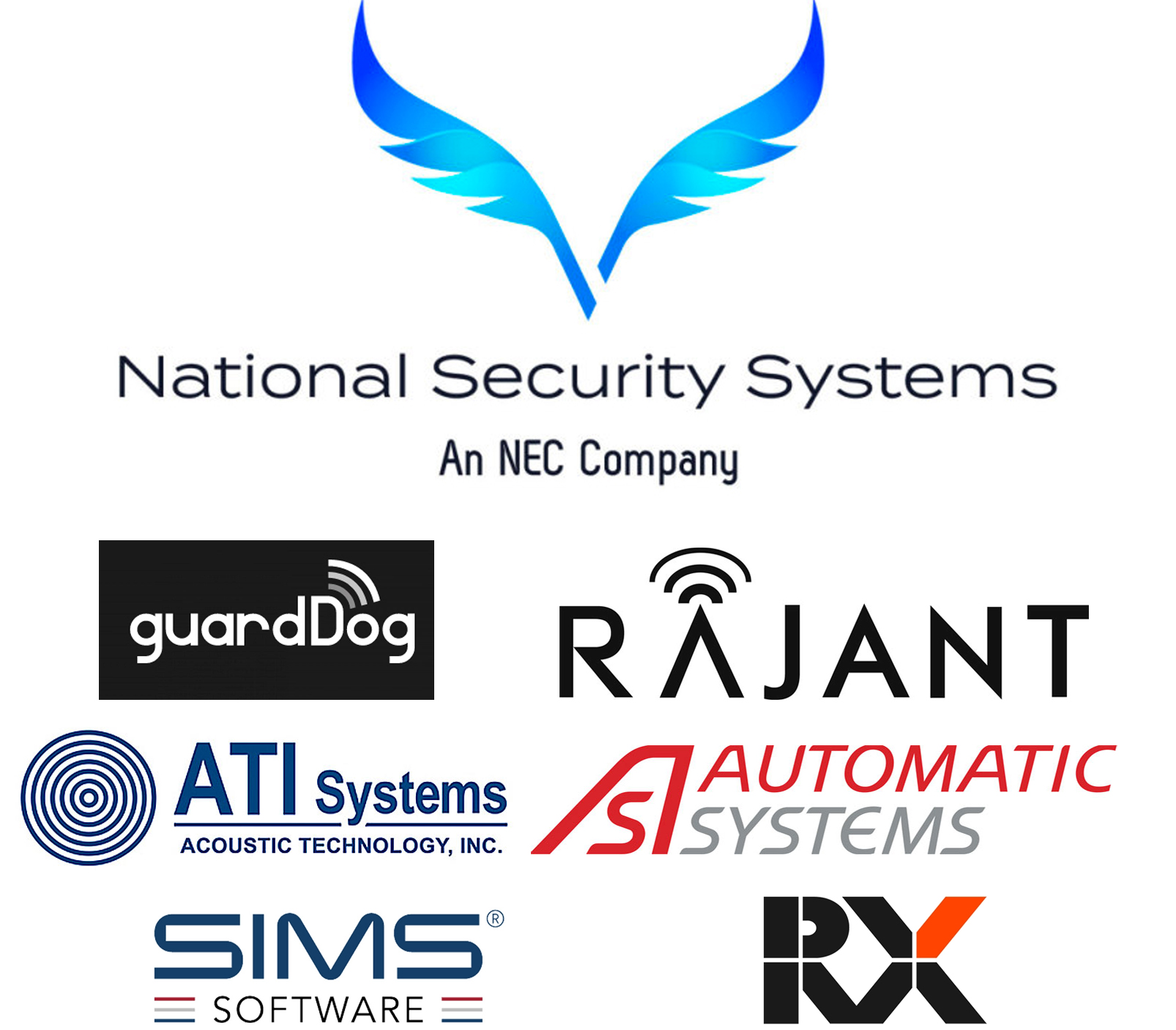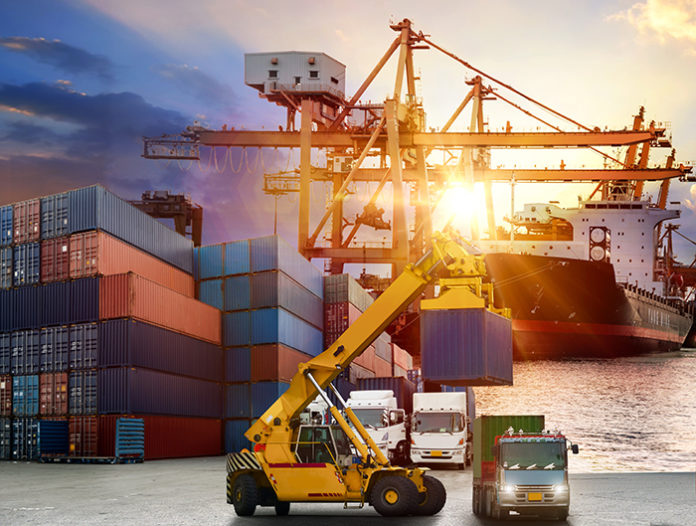
Guest Editorial by Dr. Sabatino Nacson, CTO, Teknoscan Systems Inc.
Customs and Border protection agencies worldwide are charged with protecting the public against terrorist attacks, and one widely recognized vulnerability for entry of threat substances is through seaports.
 Millions of containers arrive at a country’s seaports each year, and managing this large volume of maritime cargo requires a large manpower force, advanced intelligence, and effective inspection capabilities.
Millions of containers arrive at a country’s seaports each year, and managing this large volume of maritime cargo requires a large manpower force, advanced intelligence, and effective inspection capabilities.
An effective inspection process includes screening shipping documentation and origin information, nonintrusive inspections, and physical examinations of cargo.
The most widely used nonintrusive inspection is X-ray imaging of containers, which looks for anomalies in the cargo and unusual object images in various areas in the container.
This process is time-consuming, as images are frequently not clear enough to identify hidden objects which can be easily concealed in organic-based materials.
Additionally, as geopolitical tensions rise globally, customs and border protection agencies must be alert for the potential transport of chemical warfare agents (CWAs), as their threats of use by individual terrorist groups have not diminished.
Chemical terrorism events, war conflicts, or other emergencies connected with misuse of leakage of CWAs could cause large-scale contamination in both soil and air – and affect millions of people.
(Learn more about the continually evolving and advancing Teknoscan solutions for screening containers, ULD3 air cargo, vehicles, boxes, bags, mail delivery items, people, and more. Courtesy of TeknoScan and YouTube.)
Any ship arriving at a seaport could potentially be transporting a container with enclosed chemical agents that could easily be released by remote detonation upon arrival or during the unloading of the container.
Many technologies have been applied to the rapid detection of CWAs but have not been used in the inspection process of marine containers.
This piece advocates for the capability of direct detection of CWA simulants in marine containers (also called sea containers), which is also applicable in screening air cargo containers.
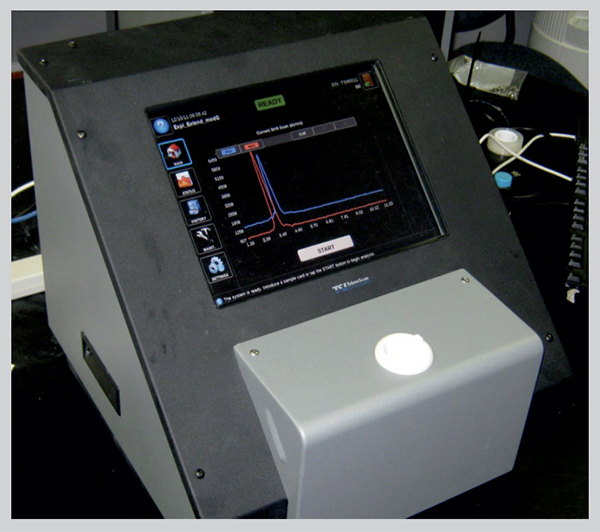
Ion mobility spectrometer (Courtesy of TeknoScan Systems Inc.)
The technology is based on TeknoScan’s Ion mobility spectrometer with a fast-polarity switch for detecting positive and negative ions.
Ion mobility spectrometer units perform fast analysis (in 20 seconds) and internal secondary validation (ISV) GC analysis.
Gas chromatograph-dual polarity ion mobility spectrometry is widely used to detect explosive materials, illicit drugs, and human trafficking in maritime cargo containers.
Detection
To demonstrate the approach, Teknoscan Systems Inc. analyzed ten CWA simulants and studied the results of vapor sampling and the analysis of two examples, dipropylene glycol methyl ether (DPGME) and diethyl methyl phosphate (DEMP).
Measurements were carried out at various soak times at temperatures varying from 10-15oC inside the container.
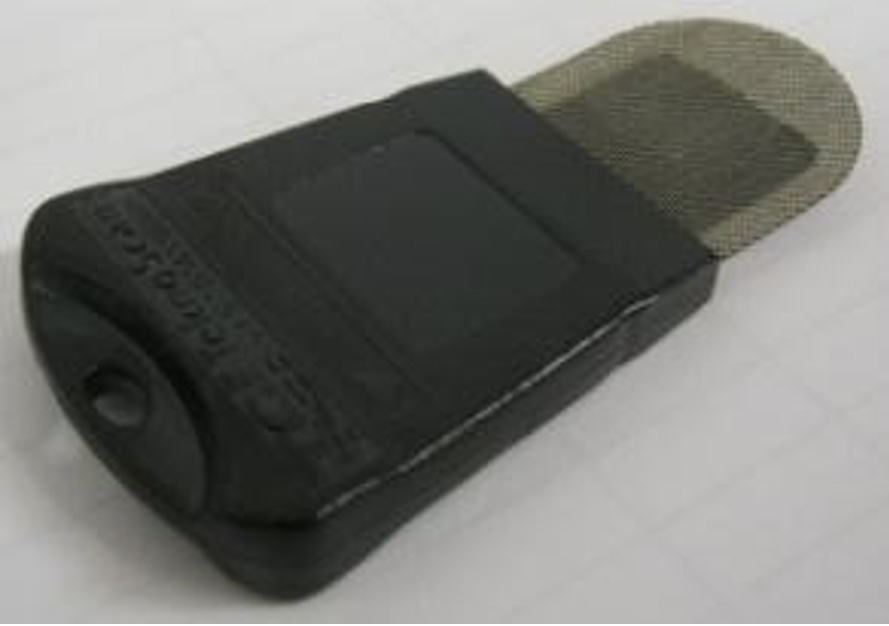
The detector unit is based on a fast ion mobility spectrometer with an internal GC separator for dealing with complex samples acquired when screening air cargo and marine containers.
The analysis was executed using a chemically treated sample card to collect and concentrate both vapors and particulates of threat substances.
A handheld sampler unit containing a Lithium battery and bottom air jets was used to assist in dislodging particulates adhering to surfaces and agitating the air inside an enclosure to induce airborne particulates.
The front opening accommodates the sample card, all types of particulate filters 30mm and 45mm diameters can also be accommodated.

The sample card was next inserted into a desorption module, where the sample was evaporated into a primary short column.
The column is resistively heated to vaporize the concentrated sample into the analytical GC column, or part of the sample is directed into the ionization source of the IMS detector, this is schematically shown in Figure 1.

Detection limits for threat substances like explosives and narcotics vary from sub-nanogram to 5ng deposited on the sample card from a neat standard solution. The sensitivity is maintained on actual samples due to the instrument’s front-end GC separation and built-in sample processing methodology.
Most simulants (including real CW agents) form the monomer and dimer peaks in chemical ionization ion mobility spectrometry for a single GC peak. And this was used to identify the substance based on both GC peak and reduced mobility constants.
Sample preparation of the simulant involved diluting pure simulant with methanol to make a solution of 60% simulant in methanol. A 1ml volume of the diluted solution was deposited on a coffee filter of roughly 10cm diameter.
The filter was placed halfway into the 20 ft container on a cardboard box. The container walls and floor were covered with Kraft paper to reduce contamination (it also acted as an absorber of evaporating simulant into the air space of the container.
All simulant solutions were purchased from Sigma-Aldrich with high purity (98-99%), with the exemption of diisopropyl methylphosphonate which was purchased from Cerilliant. Methanol was HPLC grade purchased from Caledon Chemicals, Ontario.
Table 1 shows the list of CWA simulants programmed in the detection system.
TABLE 1 CWA Simulants Detection Parameters |
||||
| Simulant | GC retention time (seconds) | Detection Mode | Drift Time | Reduced Mobility cm2/V.sec |
| m.sec | ||||
| DE2MP | 44 | Positive | 7.896 | 1.022 |
| Diethyl 2-methylallylphosphonate | ||||
| DE2MP | 44 | Positive | 5.654 | 1.428 |
| DE2MP | 44 | Negative | 5.044 | 1.606 |
| DE2PEP | 86 | Positive | 9.3 | 0.868 |
| Diethyl 2-phenylethylphosphonate | ||||
| DE2PEP | 86 | Positive | 6.27 | 1.288 |
| DE2PEP | 86 | Negative | 5.916 | 1.369 |
| DE2OBP | 58 | Positive | 5.869 | 1.376 |
| Diethyl 2-oxobutylphosphonate | ||||
| DE2OBP | 58 | Positive | 8.16 | 0.989 |
| DE2OBP | 58 | Negative | 5.62 | 1.441 |
| Methyl Salicylate | 78 | Negative | 5.632 | 1.438 |
| Methyl Salicylate | 78 | Positive | 5.796 | 1.393 |
| DIMP | 32 | Positive | 7.747 | 1.042 |
| Diso-propyl phosphonate | ||||
| DIMP | 32 | Positive | 5.5 | 1.468 |
| DEEP | 35 | Positive | 7.214 | 1.119 |
| Diethyl ethyl phosphonate | ||||
| DEEP | 35 | Positive | 5.29 | 1.526 |
| DEMP | 27 | Positive | 5.17 | 1.562 |
| Diethyl methyl phosphonate | ||||
| DEMP | 27 | Positive | 6.858 | 1.177 |
| DEDFMP | 34 | Positive | 7.216 | 1.119 |
| Diethyl difluoro-methyl phosphonate | ||||
| DEDFMP | 34 | Positive | 5.295 | 1.525 |
| Ammonium Nitrate (Explosive) | 30 | Negative | 3.9 | 2.079 |
| TNT (Explosive) | 81 | Negative | 5.259 | 1.54 |
| Triethyl Phosphate | 38 | Positive | 7.484 | 1.079 |
| Triethyl Phosphate | 38 | Positive | 5.532 | 1.459 |
| Trimethyl Phosphate | 21 | Positive | 6.101 | 1.323 |
| Trimethyl Phosphate | 21 | Positive | 4.84 | 1.668 |
| DPGME | 107 | Positive | 7.189 | 1.122 |
| Dipropylene glycol methyl ether | ||||
| DPGME | 23 | Positive | 5.202 | 1.552 |
*Assignment Positive Mode: Monomer MH+ ion and Dimer ion M2H+
*Assignment Negative Mode: M– ion and clustering with dopant reagent. Ammonium nitrate is ionized by dissociative electron capture to form NO3– peak and its hydrated ions.
2.4 Container Sampling
A probe attached to the hand-held sampler is inserted through a gap between the gasket and the door. A clean sample card is inserted in the sampler, and 1 minute of sampling is executed by pressing the button on the handle of the sampler to activate the aspiration of the sample.
The aspirated sample is concentrated on the solid-phase extraction film coating on the sample card.
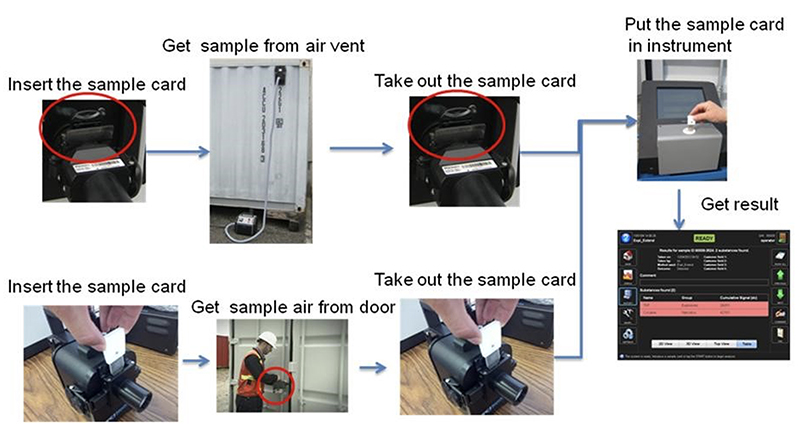
The sample card is removed and inserted into the analyzer desorber module as shown in Figure 2.
The sampling flow rate is typically 100L/min, with collection efficiency ranging from 10-50% depending on the type of substance being sampled.
Another method of nonintrusive sampling of the container is to connect a magnetic latch to the air vent and sample the air at a flow rate of 1000L/min. Each container typically has two air vents, one on the side of the door and one at the back.
3. Soak Time in the Container
After placing the wet filter in the container, air samples were withdrawn with the hand-held sampler at various intervals. The outside temperature in North of Toronto was relatively cool, varying from the morning at 10oC to 15oC in the late afternoon.
The test continued the next day, and the measurements’ data as a function of soak time are plotted in Figure 3 for CWA simulants DPGME and diethyl methyl phosphonate (DEMP).
Vapor buildup was relatively quick in 100 minutes, and the next set of measurements was done later, showing a clear decrease in concentration inside the container. DPGME concentration continued to decrease over time, but still the vapor was detected even after approximately 26.7 hours.
DEMP concentration remained steady but decreased after roughly 20 hours of incubation or soak time.
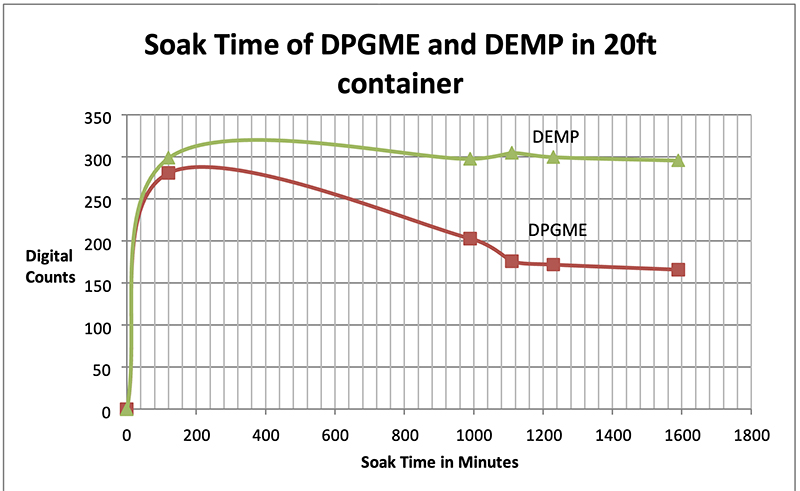
Modeling the evaporation of DPGME based on its vapor pressure at inside container temperature produced roughly 2.4ng/sec evaporation rate into a container volume of 33m3 at different times.
For example, after 2 hours, concentration buildup inside the container would be roughly 0.5ng/L, assuming no losses to the walls and surrounding surfaces.
The signal obtained after 2 hours was 299dc or the equivalent of 10ng (see calibration curve). The sampling flow rate was at 100L/min, and sampling done in 1 minute with a collection efficiency of approximately 10% would mean the vapor concentration of DPGME at roughly 1ng/L, which is in close agreement with the predicted concentration from the model.
At these low concentration levels, there are no concerns with EPA regulations and exposure limits.
This work demonstrates the importance of sampling and detecting threat chemicals that could be transported in a marine container.
Furthermore, sample cards allow for rapid purging and heating of contaminated sample card and regeneration of active sites (utilizing TeknoScan SCC-1000 Sample Cleaner Unit), which cleans five sample cards in 3 minutes, so they require no consumables.
(See how TeknoScan’s Hand-Held Sampler allows users to collect air samples from marine, sea, air, or other containers, vehicles, areas, enclosures, skids, packages, or even hard-to-reach surfaces where swabbing is not a viable approach. Air samples from an object, vehicle, package, pallet, or person are drawn through a TeknoScan sample card for analysis. Courtesy of TeknoScan and YouTube.)
Conclusion
Present GC-IMS technology could better enable U.S. Customs and Border Protection (CBP) Agents with the ability to rapidly detect and identify explosives, illicit drugs, and chemical threats during cargo inspections.
Based on the mass volume of cargo containers entering the country annually, I believe that concealed CWP agents within maritime cargo shipments pose the highest risk of chemical weapons entering the United States.
Integrating intelligence information, X-ray imaging, and chemical detection as a primary or secondary inspection will provide the most benefit and needed security at a seaport.
About the Author

Dr. Sabatino Nacson, B.Sc., M.Eng., Ph.D., is a world leader in new product development for the trace detection industry and has more than 25 years of experience in analytical chemistry and instrument development, including explosives, drugs, chemicals, pharmaceuticals, chemical warfare, and biological agents.
As TeknoScan’s CTO, Dr. Nacson has demonstrated the leadership and experience in worldwide chemical trace detection required of a first-rank company.
Dr. Nacson has developed and introduced scanning and security products, having achieved $1 billion in international sales (all figures US).
His products have covered various applications from security, defense, and life sciences to environmental and industrial processes.
Law enforcement agencies such as the FBI, ATF and RCMP have routinely sought his expertise, along with several other governments.
TeknoScan Systems is currently focused on developing and deploying its advanced Trace Chemical Detection (TCD) solutions to quickly detect and identify explosives, drugs, and other contraband in cargo containers, which makes 100 percent cargo inspection requirements achievable.
TeknoScan Systems’ state-of-the-art award-winning patented technologies detect and identify banned or hazardous materials through its sampling and analysis of trace vapors and particles in the air or on surfaces.
TeknoScan’s advanced sampling and analyzing technologies rapidly and reliably detect and identify organic compounds such as explosives, drugs, and other target substances.
TeknoScan Systems Returns to Compete in 2023 ‘ASTORS’ Homeland Security Awards

American Security Today’s Annual ‘ASTORS’ Awards is the preeminent U.S. Homeland Security Awards Program, and now in its Eighth Year, continues to recognize industry leaders of Physical and Border Security, Cybersecurity, Emergency Preparedness – Management and Response, Law Enforcement, First Responders, as well as federal, state and municipal government agencies in the acknowledgment of their outstanding efforts to Keep our Nation Secure.
TeknoScan Systems


-
TSI-3000 COVID-19 Breathalyzer
-
The TeknoScan TSI-3000 is an innovative and novel breathalyzer for Volatile Organic Compounds (VOCs) that are present on COVID-19’s infected people’s breath.
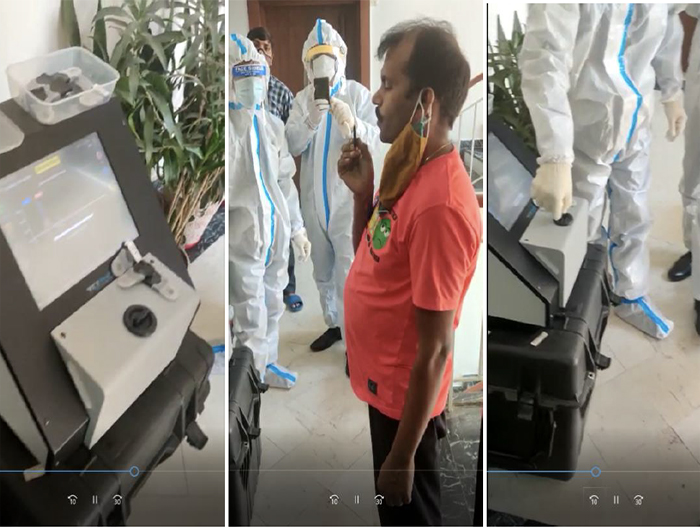
-
The testing procedure involves a testing subject to breath ten times on a nano-carbon coated sample card to trap and enrich the VOCs on the person’s breath, allowing for a rapid, less invasive, and safer collection method for healthcare workers as they are not directly exposed to the potentially deadly virus collection.
-
The sample card is then inserted in a heated inlet to vaporize the sample into a dual polarity ion mobility spectrometer with a front GC separation technique.
-
Sample analysis takes only 20 seconds, with the results displayed on the device’s screen.
-
In 2021 testing, over 900 people in India were screened using the TeknoScan TSI-3000 Analyzer Mobile Device with a 95% detection rate confirmed by PCR testing.
(See the Teknoscan Systems TSI-3000 Analyzer in action. Courtesy of Akhil Potturi and YouTube.)
-
The method allows large numbers of people to be quickly screened with no use of expensive, consumable reagents, as the sample card can undergo sterilization in the heated inlet at 250oC, which eliminates any virus collected on the screen and allows the next sample to be taken.
-
*TeknoScan is a Returning ‘ASTORS’ Champion, having secured an ‘ASTORS’ Award in the 2018 Program.
The continually evolving ‘ASTORS’ Awards Program will highlight the trail of Accomplished Women in Leadership in 2023 and the Significance and Positive Impact of Advancing Diversity and Inclusion in our Next Generation of Government and Industry Leaders. Because #MentorshipMatters.
So be on the lookout for exciting upcoming announcements of Speakers, Presenters, Book Signing Opportunities, and Attendees at the 2023 ‘ASTORS’ Awards Presentation Luncheon in November of 2023 in New York City!
Nominations are currently being accepted for the 2023 ‘ASTORS’ Homeland Security Awards at https://americansecuritytoday.com/ast-awards/.
Comprehensive List of Categories Include:
| Access Control/ Identification | Personal/Protective Equipment | Law Enforcement Counter Terrorism |
| Perimeter Barrier/ Deterrent System | Interagency Interdiction Operation | Cloud Computing/Storage Solution |
| Facial/IRIS Recognition | Body Worn Video Product | Cyber Security |
| Video Surveillance/VMS | Mobile Technology | Anti-Malware |
| Audio Analytics | Disaster Preparedness | ID Management |
| Thermal/Infrared Camera | Mass Notification System | Fire & Safety |
| Metal/Weapon Detection | Rescue Operations | Critical Infrastructure |
| License Plate Recognition | Detection Products | COVID Innovations |
| Workforce Management | Government Security Programs | And Many Others to Choose From! |
Don’t see a Direct Hit for your Product, Agency or Organization?
Submit your category recommendation for consideration to Michael Madsen, AST Publisher, at: mmadsen@americansecuritytoday.com.
Homeland Security remains at the forefront of our national conversation as we experience an immigration crisis along our southern border and crime rates that are dramatically higher than before the Pandemic across the United States.

These challenges have become a national priority with an influx of investments in innovative new technologies and systems.
Enter American Security Today, the #1 publication and media platform in the Government Security and Homeland Security fields, with a circulation of over 75,000 readers and many tens of thousands more who visit our AST website at www.americansecuritytoday.com each month.
The pinnacle of the Annual ‘ASTORS’ Awards Program is the Annual ‘ASTORS’ Awards Ceremony Luncheon Banquet, an exclusive, full-course plated meal event in the heart of New York City.

The 2022 exclusive sold-out ‘ASTORS’ luncheon featured representatives of law enforcement, public safety, and industry leaders who came together to honor the selfless service of those who stand on the front lines and those who stand beside them – providing the capabilities and technologies to create a safer world for generations to come.
Last year marked the 20th anniversary of the Department of Homeland Security (DHS), which came out in force to discuss comprehensive collaborations between private and public sectors that have led to the development of intelligence and technologies which serve to protect our nation.
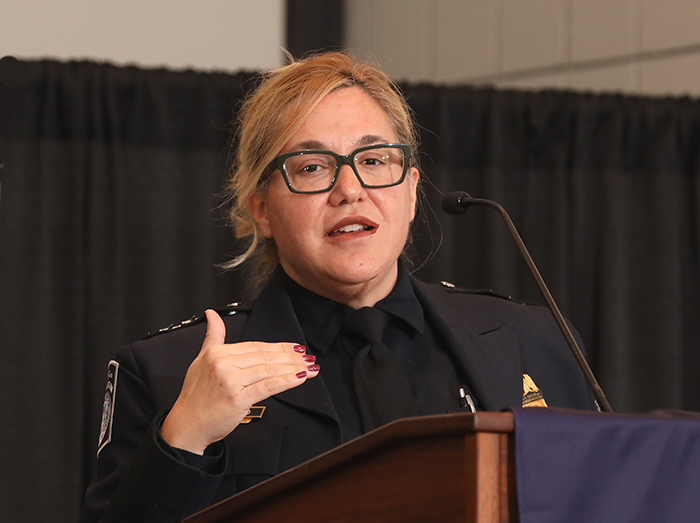
The keynote address was provided by U.S. Customs and Border Protection (CBP) Office of Field Operations (OFO) Deputy Executive Assistant Commissioner (DEAC) Diane Sabatino, who described the changes to CBP through the tragedy of 9/11 and the relentless commitment to its mission and ongoing investment in the latest technologies and innovations to protect our borders and Homeland.
The resounding theme of the DEAC’s remarks was her pride in the women and men of the CBP and their families who support them.
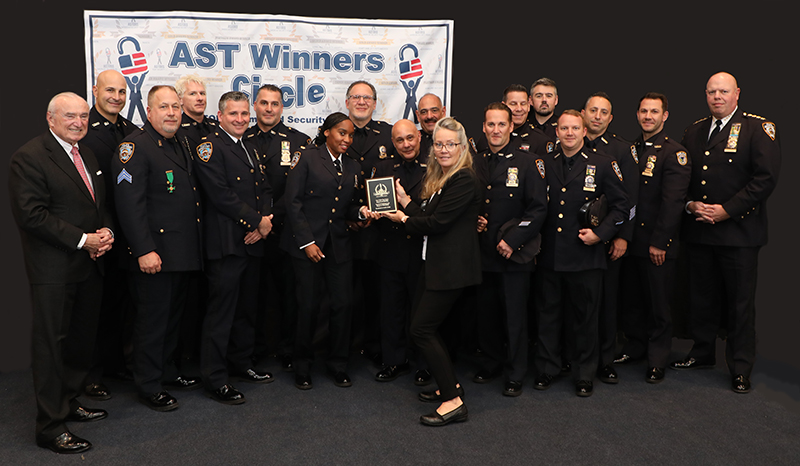
AST was also joined by Legendary Police Commissioner William Bratton, who spoke about his love for the City of New York, the Profession of law enforcement to which he has dedicated his life, and for which he continues to drive thought leadership and innovation.
New York City Police Department (NYPD) Chief of Department Kenneth Corey, came out to address Luncheon attendees and shared some of his experiences and the changes in policing he’s witnessed over his more than three decades of service.
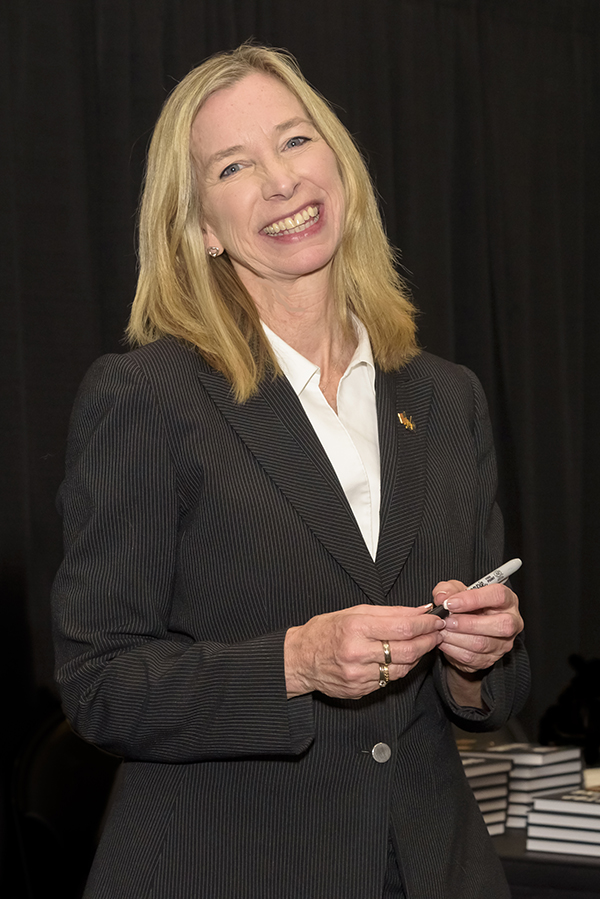
FDNY Chief Joseph Jardin honored the men and women of the FDNY, not only those who currently serve but all of those who have selflessly served, with special recognition of those lost on 9/11.
Chief Jardin spoke about the continuing health battle of many following 9/11 with cancer and respiratory disease, yet now knowing the full consequences, would not have made a different decision to respond.
As Chief Jardin noted, mission-driven service is the lifeblood of every firefighter, volunteer, and sworn member, and has been so throughout the history of the Fire Service.
Former head of the FBI’s active shooter program, Katherine Schweit joined AST to sign complimentary copies of her book, ‘STOP THE KILLING: How to End the Mass Shooting Crisis, thanks to the generosity of our 2022 ‘ASTORS’ Awards Sponsors.
The 2022 ‘ASTORS’ Awards Program was Proudly Sponsored by NEC National Security Systems (NSS), ATI Systems, Automatic Systems of America, guardDog AI, Fortior Solutions, IPVideo Corporation, Rajant Corporation, RX Global, and SIMS Software!
We were pleased to welcome the esteemed New York City Fire Department (FDNY); the New York City Police Department (NYPD); and the NYC Hospital Police, as well as Executive Management from the U.S. Cybersecurity and Infrastructure Security Agency (CISA), and many other DHS agencies, Federal law enforcement agencies, and private/public partnerships such as the National Association of Women Law Enforcement Executives (NAWLEE), the 30×30 Initiative, a coalition of professionals advancing the representation of women in policing; and Operation Lifesaver, Inc. (OLI) (rail safety advocates).
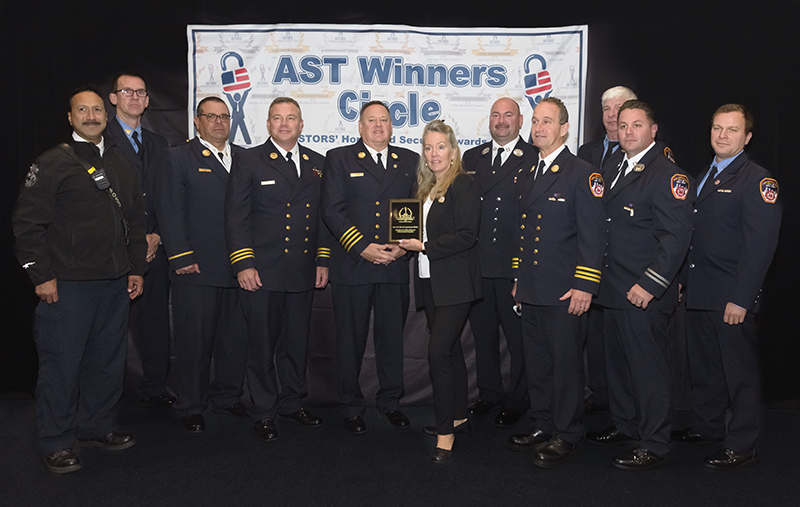
The prestigious Annual ‘ASTORS’ Homeland Security Awards Program highlights the most cutting-edge and forward-thinking security solutions coming onto the market today, to ensure our readers have the information they need to stay ahead of the competition and keep our Nation safe – one facility, street, and city at a time.
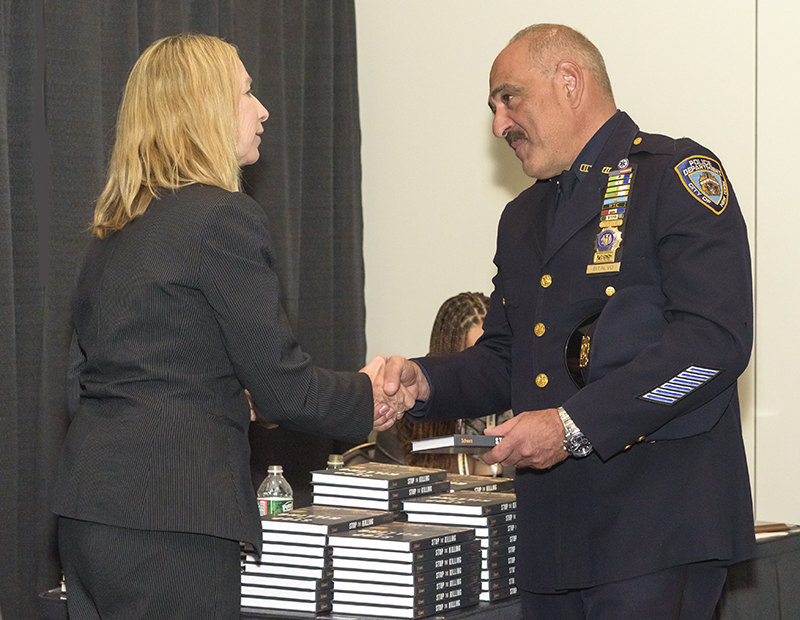
In 2022 over 240 distinguished guests representing Federal, State, and Local Governments, and Industry Leading Corporate Firms gathered from across North America, Europe, and the Middle East to be honored among their peers in their respective fields.
Each year, to keep our communities safe and secure, security dealers, installers, integrators, and consultants, along with corporate, government, and law enforcement/first responder practitioners, convene in New York City to network, learn and evaluate the latest technologies and solutions from premier exhibiting brands at ISC East, the Natural Disaster & Emergency Management Expo (NDEM EXPO), and the ASIS NYC Expo.
ISC East is the Northeast’s leading security & public safety event, hosted in collaboration with sponsor Security Industry Association (SIA) and in partnership with ASIS NYC.

 Corporate firms, the majority of which return year to year to build upon their Legacy of Wins, include:
Corporate firms, the majority of which return year to year to build upon their Legacy of Wins, include:
Advanced Detection Technologies, AMAROK, ATI Systems, Axis Communications, Automatic Systems, BriefCam, Canon U.S.A., Cellbusters, CornellCookson, CyberArk Fortior Solutions, guardDog.ai, Hanwha Techwin of America, High Rise Escape Systems, IPVideo Corporation, Konica Minolta Business Solutions, NEC National Security Systems, NICE Public Safety, OnSolve, PureTech Systems, Quantum Corporation, Rave Mobile Safety, Regroup Mass Notification, Robotic Assistance Devices, Rajant Corporation, SafeLogic, Select Engineering Services LLC, Singlewire Software, SolarWinds Worldwide, Teledyne FLIR, Valor Systems, and West Virginia American Access Control Systems, just to name a few!
Why American Security Today?
The traditional security marketplace has long been covered by a host of publications putting forward the old-school basics to what is Today – a fast-changing security landscape.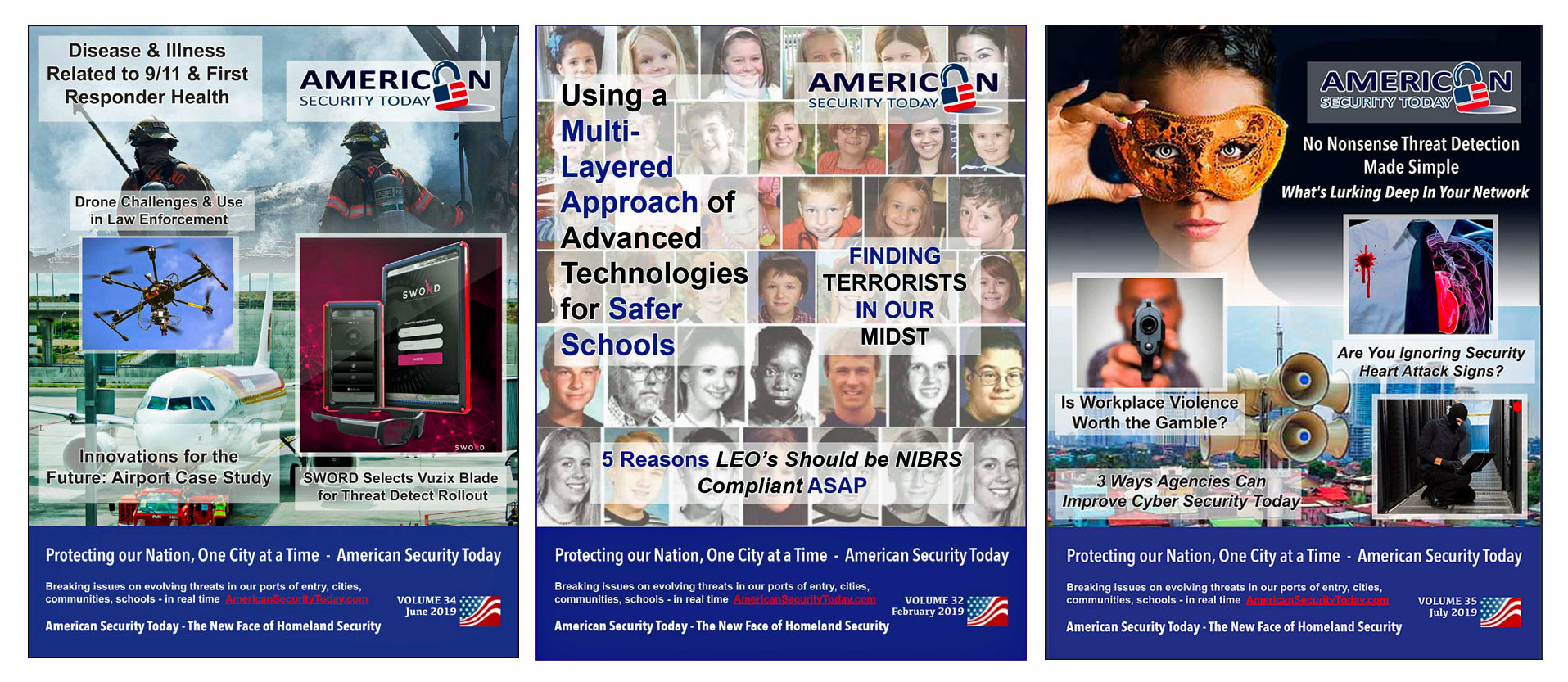
American Security Today is uniquely focused on the broader Homeland Security & Public Safety marketplace with over 75,000 readers at the Federal, State, and local levels of government as well as firms allied to the government.
American Security Today brings forward a fresh compelling look and read with our customized digital publications that hold readers’ eyes throughout the story with cutting-edge editorial that provides solutions to their challenges.
Harness the Power of the Web – with our 100% Mobile Friendly Publications

AST Digital Publications are distributed to over 75,000 qualified government and homeland security professionals, in federal, state, local, and private security sectors.
‘PROTECTING OUR NATION, ONE CITY AT A TIME’
AST Reaches both Private & Public Experts, essential to meeting these new challenges.
Today’s new generation of public safety and security experts need real-time knowledge to deal with domestic and international terrorism, lone wolf attacks, unprecedented urban violence, shifts in society, culture, and media bias – making it increasingly difficult for Homeland Security, Law Enforcement, First Responders, Military and Private Security Professionals to implement coordinated security measures to ensure national security and improve public safety.
These experts are from Government at the federal, state, and local levels as well as from private firms allied to the government.
AST provides a full plate of topics in our AST Monthly Magazine Editions, AST Website, and AST Daily News Alerts, covering 23 Vital Sectors such as Access Control, Perimeter Protection, Video Surveillance/Analytics, Airport Security, Border Security, CBRNE Detection, Border Security, Ports, Cybersecurity, Networking Security, Encryption, Law Enforcement, First Responders, Campus Security, Security Services, Corporate Facilities, and Emergency Response among others.
AST has Expanded readership into integral Critical Infrastructure audiences such as Protection of Nuclear Facilities, Water Plants & Dams, Bridges & Tunnels, and other potential targets of terrorism.
Other areas of concern include Transportation Hubs, Public Assemblies, Government Facilities, Sporting & Concert Stadiums, our Nation’s Schools & Universities, and Commercial Business Destinations – all enticing targets due to the large number of persons and resources clustered together.
To learn more, please see the 2022 ‘ASTORS’ CHAMPIONS Edition Fully Interactive Magazine – the Best Products of 2022 ‘A Year in Review.’
The Annual CHAMPIONS edition reviews ‘ASTORS’ Award Winning products and programs, highlighting key details on many of the winning firm’s products and services, including video interviews and more.
 The 2022 CHAMPIONS serves as your Go-To Source through the year for ‘The Best of 2022 Products and Services‘ endorsed by American Security Today – and can satisfy your agency’s and/or organization’s most pressing Homeland Security and Public Safety needs.
The 2022 CHAMPIONS serves as your Go-To Source through the year for ‘The Best of 2022 Products and Services‘ endorsed by American Security Today – and can satisfy your agency’s and/or organization’s most pressing Homeland Security and Public Safety needs.
From Physical Security (Access Control, Critical Infrastructure, Perimeter Protection, and Video Surveillance Cameras and Video Management Systems), to IT Security (Cybersecurity, Encryption, Data Storage, Anti-Malware, and Networking Security – to name a few), the 2022 ‘ASTORS’ CHAMPIONS EDITION has what you need to Detect, Delay, Respond to, and Mitigate today’s real-time threats in our constantly evolving security landscape.
It also features guest editorial pieces from some of the security industry’s most respected leaders and recognized firms in the 2022 ‘ASTORS’ Awards Program.
For more information on All Things American Security Today, as well as the 2023 ‘ASTORS’ Awards Program, please contact Michael Madsen, AST Publisher at mmadsen@americansecuritytoday.com.
AST strives to meet a 3 STAR trustworthiness rating, based on the following criteria:
- Provides named sources
- Reported by more than one notable outlet
- Includes supporting video, direct statements, or photos













